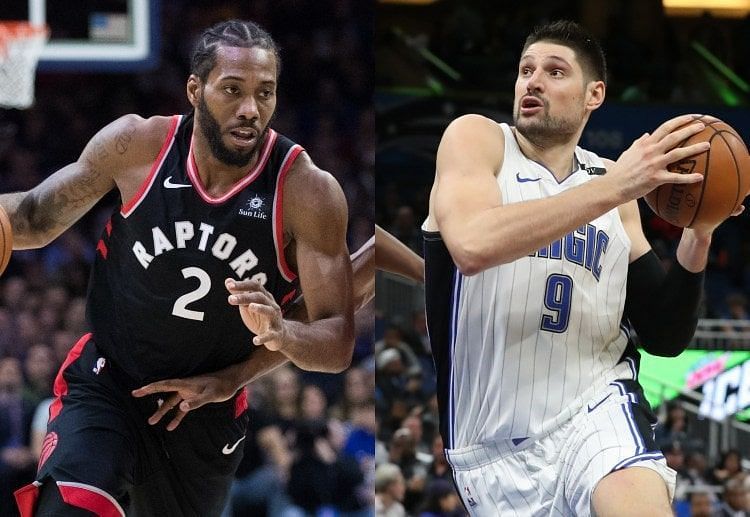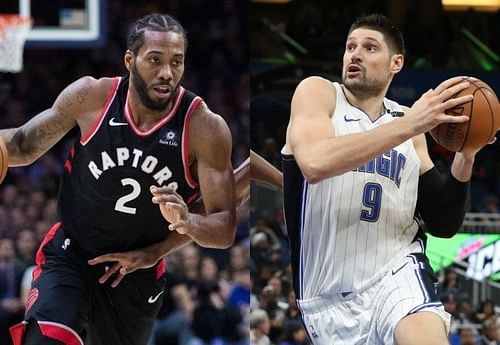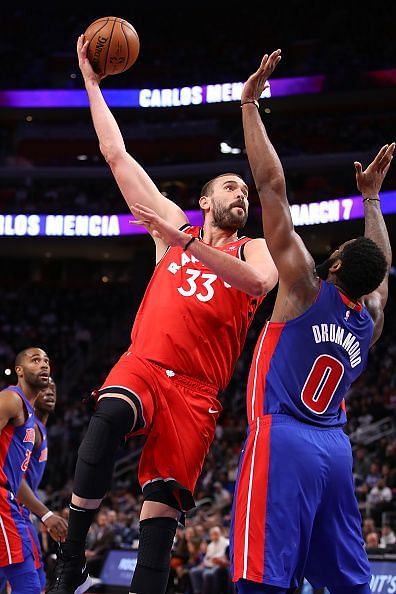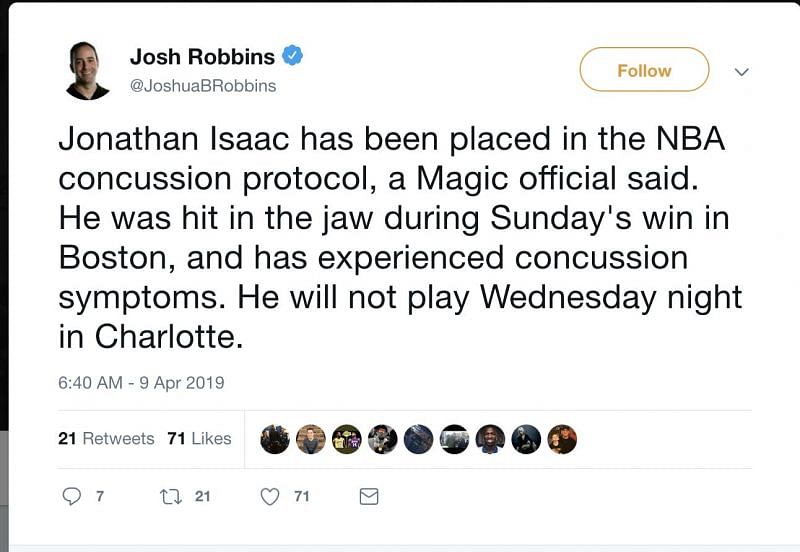
NBA: The Orlando Magic upsetting the Toronto Raptors is not as farfetched as it seems

2012. That is the last time that the Orlando Magic qualified for the NBA Playoffs. The Magic’s starting lineup that season consisted of Jameer Nelson, JJ Reddick, Hedo Türkoglu, Ryan Anderson, and Dwight Howard. The head coach of the Magic at this time was Stan Van Gundy. Safe to say, things have certainly changed in Orlando.
After a seven-season postseason drought, first-year Magic head coach Steve Clifford has his team back in the playoffs as the number seven seed in the Eastern Conference. With the first game of their playoff series against the second seed Toronto Raptors set to tip off on Saturday at 5:00 p.m., this series, out of all eight first-round series, has the greatest potential for a potential upset.
Back on February 8, the Toronto Raptors traded some key bench pieces in Delon Wright, Jonas Valanciunas, and CJ Miles to the Memphis Grizzlies for Marc Gasol; a veteran center with proven playoff experience during his 10½ seasons with the Grizzlies. At the time, this trade was a bit of a headscratcher for the Raptors, and two months later, it is still puzzling.
Gasol, formerly one of the most elite centers in basketball, has seen his production slowly declining over the last three seasons. Go back to 2016-2017, the last time that Gasol was an All-Star, and his VORP (Value over Replacement Player) was 4.0, his highest in four seasons. In 26 games with the Raptors, Gasol’s VORP has been 0.9. The combined VORP of Valanciunas and Wright alone (1.0) is higher than what Gasol has contributed for them up to this point.
You could make the argument that Gasol’s best features that Toronto desired are his abilities to distribute the ball as a big man and also spacing the floor with his shooting range. While Gasol’s assist percentage ranks third on the Raptors at 21.2%, his usage percentage ranks as the fourth lowest on the team, only ahead of OG Anunoby, Danny Green (a spot-up shooter who rarely dribbles the basketball), and the seldom played Patrick McCaw.
Earlier this season, playing for the Grizzlies, Gasol’s USG% was 22.3%. Gasol has also gone from a 38.5% shooter from 10-16 feet from the basket to a 33.3% shooter from the mid-range. Uncoincidentally, Gasol is now shooting 72% of his field goal attempts from within three feet of the basket, similar to how he used to play before the NBA started requiring centers to become more than just rim protectors/dunkers.
The now 34-year-old Gasol is still averaging 15.7 points per game, 8.6 rebounds per game, and 4.7 assists per game in just shy of 34 minutes played per game. While those numbers are definitely nothing to scoff at, keep in mind that in Memphis, Gasol was a second option scorer after Mike Conley Jr.
In Toronto, Kawhi Leonard, Kyle Lowry, Danny Green, and Pascal Siakam are all ahead of Gasol as scoring options. The point overall is, with the Raptors not utilizing Gasol to his full potential as a player due to other options on the floor being prioritized, what was the need to trade for him?

Since being traded to the Grizzlies, Valancianus has averaged 20 points per game and 10.7 rebounds per game on 54.5% shooting. Wright has averaged 12 points per game, five rebounds per game, and five assists per game on 43.4% shooting. While neither of these players are great shooters, the value of Wright is his ability as a slasher and as a playmaker.
For Valancianus, he scores 61.0% of his points off of pick-and-rolls as the roll man. Gasol, meanwhile, only scores 43.5% of his points off of pick-and-rolls. With the Magic allowing the eighth fewest points per game in the paint at 47.2 points per game, the third highest defensive rebound percentage at 75.4%, and allowing the fewest second chance points at 10.9 points per game, scoring on the Magic inside with their length and athleticism is no easy task and trading away players who can come off the bench and either slash or specialise in scoring in the paint does not really make sense to me, especially considering how the Raptors have underutilized Gasol.
Since the trade deadline, the Magic and Raptors have played each other twice overall, with each team winning once. While Kawhi Leonard did not play in the first meeting that the Magic won in Toronto, in the second match, Leonard was held to just 15 points on 5/12 shooting. In fact, outside of a disastrous second quarter, the Magic outplayed the Raptors for large chunks of the game, even without any scoring help from Terrence Ross and Aaron Gordon. This is largely in part due to the terrific defense of Jonathan Isaac on the Raptors' arguably second-best player, Pascal Siakam.
Siakam, who has been averaging 17.0 points per game on an effective field goal percentage of 59.0%, scored just six points off 2/9 shooting, the last time the Magic and Raptors played while Isaac covered him.
Isaac’s health for this series is still to be determined however after he was placed in the NBA’s concussion protocol following being hit in the jaw in a game last Sunday against the Boston Celtics. Having Isaac and Gordon, the Magic’s two best two-way defenders healthy to cover Leonard and Siakam is critical to Orlando’s postseason success.

For the Magic offensively, Nikola Vucevic, much like Kawhi Leonard does for the Raptors, will have to carry most of the load offensively.
Under Steve Clifford this season, Vucevic has transformed his game from a very good player into one of the most elite in basketball; there truly is almost nothing that the 7’0” Montenegrin cannot seem to do on a basketball court whether it be scoring, rebounding, or even distributing. In fact, you could even make the argument that when the Magic and Raptors take the court on Saturday afternoon, Vucevic, and not Leonard, will be the best player on the floor.
Vucevic is fifth in basketball in Real Plus-Minus at 5.49, eighth in Real Plus-Minus Wins at 13.67, fifth in Defensive Real Plus-Minus, all while accounting for 29% of the Magic’s total offensive production. Vucevic is also a crucial player in helping the Magic’s ball movement as well. With Vucevic on the court, the Magic’s assist percentage is 27.5%; without Vucevic, that number drops to just 20.8%.


Whatever the outcome between the Magic and the Raptors, the series is set to be a really fun one. A battle between one franchise in the Raptors, who have put all their eggs in one basket to win a title this season with Kawhi Leonard set to be a free agent this summer versus the Magic, whose dark days of rebuilding seem to be finally over, and also have an interesting summer to look forward to with Vucevic being a free agent as well.
With Leonard being as silent as a rock on his future all season, combined with missing 95 games over the past two seasons, including 22 games this season, due to “load management”, the feeling is that Leonard already has one foot out the door and is not truly locked into this playoff run.
My prediction is that the Orlando Magic win this series in six games over the Toronto Raptors.